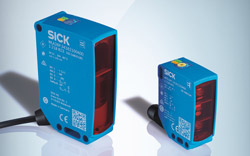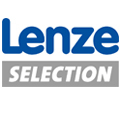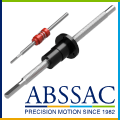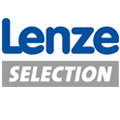
Posted to News on 26th Feb 2018, 20:02
Next-generation photoelectric sensors are more user-friendly
Sick's next-generation W16 and W26 smart sensors with BluePilot alignment are part of a streamlined portfolio of photoelectric sensors that have been radically upgraded to optimise ease-of-use with reliable object detection.

The W16 and W26 proximity, reflex and through-beam sensors are manufactured at a purpose-built, fully-automated production facility in southern Germany. They mark the culmination of a two-year, multi-million-Euro research and development project involving extensive consultation with Sick customers worldwide.
David Hannaby, Sick's UK Product Manager for Presence Detection, comments: "When we asked our customers what was most important for future development of photoelectric object detection, they put usability top of the list; they already expected our sensors to be robust, 100 per cent reliable and always available.
"So, we set out on a journey to achieve the best of all worlds in one family. We developed the new operating technologies our customers wanted, as well as bringing together all of Sick's leading optical sensing capabilities to produce a consistent high-flier."
Ease of use
For usability, the W16 and W26 sensors benefit from Sick's new BluePilot assistant, which features a line of five LEDs mounted on top of the sensor for quick, easy and accurate alignment of the light spot, even over long distances. The BluePilot assistant combines a potentiometer and teach-in button to simplify setup, range assessment and application mode selection, and it also provides a real-time on-sensor status display.
Manufactured in a new robotic production facility to ensure consistent plug-and-play alignment of every device, Sick W16 and W26 sensors bring together the best of Sick's optical sensing technologies to meet any detection challenge:
- Sick's patented Twin-Eye technology achieves reliable detection for reflective materials such as films, foils, contrast-rich or uneven surfaces. The Twin-Eye's innovative second receiving channel builds-in high process stability, thereby reducing the risk of false or missed signals due to deflections of the light beam.
- Sick has incorporated LineSpot linear optics to provide highly reliable detection where the object has mesh, perforations, integral gaps or breaks.
- Sick ClearSens optical filter technology makes is excellent for detecting semi-transparent and transparent objects such as bottles and plastic trays. Intuitive mode selection on the device make it easy to set up the sensor according to the characteristics of object to be detected.
- With Sick's revolutionary OptoFilter technology, the sensors are immune to interference from unwanted light sources and reflections, including LED lighting, hi-viz safety workwear or reflections from machinery.
- Sick's AutoAdapt function means if the reflector or the front screen of the sensor becomes contaminated, the photoelectric sensor automatically adjusts its switching thresholds for reliable detection.
Enhanced communications
A claimed 'industry-first' in-built Bluetooth option enables easy monitoring and advanced commissioning from smartphones or tablets.
Smart IO-Link two-way communication is standard on all devices for easy setup and parameter cloning of replacement sensors, addressability and diagnostic functions, as well as providing the opportunity to incorporate sensor-level smart tasks such as counting and time measurement.
Every W16 and W26 sensor comes in a robust housing moulded from Vistal (a glass fibre-reinforced polymer) to withstand harsh chemical, thermal and mechanical environmental conditions, as well shocks and vibrations. The casing is laser-etched with all product identification information so the sensor remains easily identifiable even after years of service. A 2D barcode enables easy identification and access to product manuals via a smartphone or tablet.
Follow the links for more information about Sick's next-generation W16 photoelectric sensors and W26 photoelectric sensors, or contact Andrea Hornby on +44 (0)1727 831121 or email [email protected] (please mention MachineBuilding.net).

































